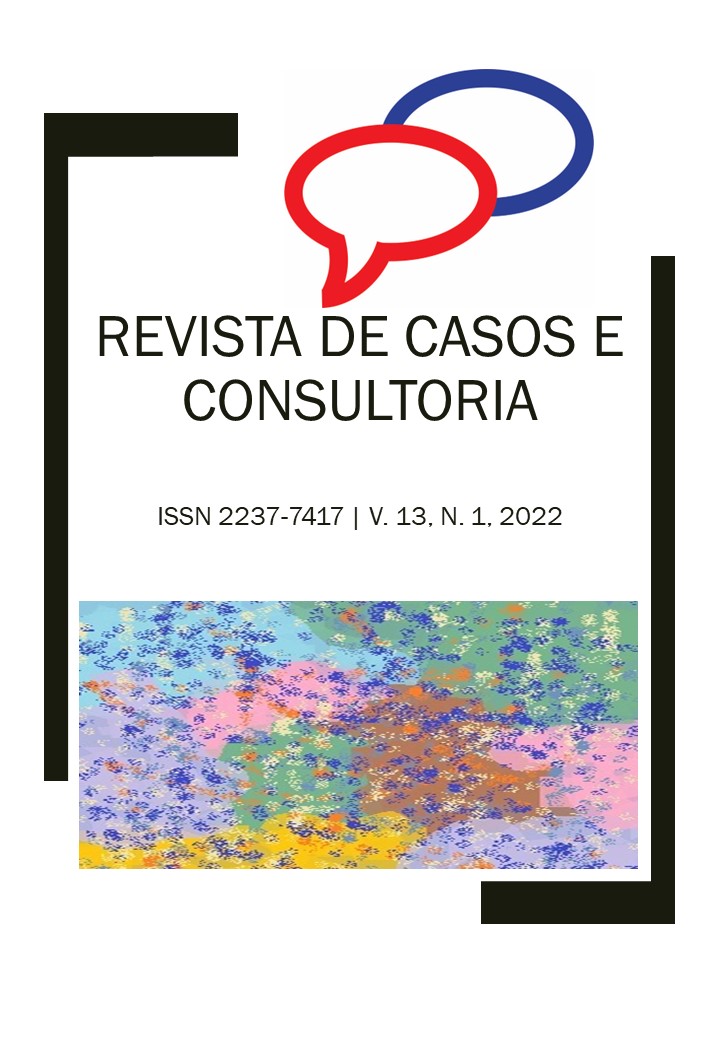Analysis of possible drug interactions in covid-19 treatment associated with breast cancer oncology therapy
Keywords:
COVID-19, breast cancer, drug interactionsAbstract
In December 2019, an outbreak began in the city of Wuhan (China) of a new strain of the coronavirus family, called SARS-COV-2. The epidemiological situation in the world was changed by the unexpected arrival of the SARS-COV-2 virus, bringing many collections to health, mainly within the risk group classification. Faced with the new epidemiological situation, the scientific community sought ways to control the new disease. Breast cancer is the cancer that most affects Brazilian women, considering the importance of this risk group and research work related to the safety of treatment for COVID-19 in infected patients who have breast cancer, this work gathered information about possible drug interactions and inherent risks, thus becoming a tool that will increase the safety of cancer patients. It is characterized as a documentary research, with a quantitative, retrospective, analytical-discursive approach that uses a Drugs® database to obtain cross-referenced information from databases with other drugs. Research is known that some of the drugs used by the population in the treatment or prevention of COVID-19 have several drug interactions with drugs used to treat breast cancer, with methotrexate and tamoxifen being the ones with the highest number interactions, some of which are very serious. Thus, if the breast cancer patient is using some medications, the cost-effectiveness needs to be analyzed by the physician, as well as the patient needs to be monitored during use, so that the cancer treatment is not harmed.
Downloads
References
ADDISON, D. et al. Cardio‐Oncology in the Era of the COVID‐19 Pandemic and Beyond. Journal of the American Heart Association, 9(19), 2020, e017787.
AXFORS, C. et al. Mortality outcomes with hydroxychloroquine and chloroquine in COVID-19 from an international collaborative meta-analysis of randomized trials. Nature communications, 12(1), 2021, p.1-13.
BARTOSZKO, J. J. et al. Prophylaxis against covid-19: living systematic review and network meta-analysis. bmj, 373, 2021.
BOMFIM, V. V. B., S. et al. Uso do metotrexato como preditor para malformações fetais. Research, Society and Development, 10(8), 2021, e41610817131-e41610817131.
CURIGLIANO, G. et al. Recommendations for triage, prioritization and treatment of breast cancer patients during the COVID-19 pandemic. The Breast, 52, 2020, p.8-16.
DA SILVA, C. S. et al. Principais interações medicamentosas dos anti-inflamatórios não esteroidais mais empregados na Odontologia. Ação Odonto, 2018.
DA SILVA, J. M. D. S. Mtx-metotrexato e seu amplo uso na quimioterapia antineoplásica. Revista Multidisciplinar em Saúde, 2(3), 2021, p. 24-24.
DAVIES, E. C. et al. Interpreting adverse drug reaction (ADR) reports as hospital patient safety incidents. British journal of clinical pharmacology, 70(1), 2010, p. 102-108.
DIEL, J. D. A. C. et al. Uso off-label de medicamentos segundo a idade em crianças brasileiras: um estudo populacional. Revista Brasileira de Epidemiologia, 23, 2020.
DUAN, Y. J., et al. The Trial of Chloroquine in the Treatment of Corona Virus Disease 2019 (COVID-19) and Its Research Progress in Forensic Toxicology. Fa yi xue za zhi, 36(2), 2020.
GLASSMAN, A. H.; BIGGER Jr, J. T. Antipsychotic drugs: prolonged QTc interval, torsade de pointes, and sudden death. American Journal of Psychiatry, 158(11), 2001, p.1774-1782.
GONZÁLEZ-DÍAZ, E et al. Adenosis vaginal no relacionada con dietilestilbestrol. Clínica e Investigación en Ginecología y Obstetricia, 34(4), 2007, p.147-150.
HU, T.et al. A comparison of COVID-19, SARS and MERS. PeerJ, 8, 2020, e9725.
JACH, R.; MAZUREC, M.; TRZESZCZ, M.; ZIMMER, M. Possible deferral of diagnostic and therapeutic procedures for patients with abnormal screening tests results in cervical cancer secondary prevention in current SARS-CoV-2 pandemic Interim guidelines of the Polish Society of Gynecologists and Obstetricians and the Polish Society of Colposcopy and Cervical Pathophysiology. Ginekologia Polska, 91(7), 2020.
JOHNSON, E. J et al. Reduced absorption of oral ciprofloxacin after chemotherapy for haematological malignancy. Journal of Antimicrobial Chemotherapy, 25(5), 1990, p.837-842.
KAROLYI, M. et al. Hydroxychloroquine versus lopinavir/ritonavir in severe COVID-19 patients. Wiener Klinische Wochenschrift, 133(7), 2021, p. 284-291.
LIANG, W. et al. Cancer patients in SARS-CoV-2 infection: a nationwide analysis in China. The lancet oncology, 21(3), 2020, p.335-337.
LIMA, R. E. F. Interações medicamentosas potenciais em pacientes de Unidade de Terapia Intensiva de um Hospital Universitário do Ceará (Doctoral dissertation, Universidade de São Paulo), 2007.
LIMA, J. V. O et al. Potential risk of investigated drugs for the treatment of COVID-19: drugs interactions. Revista Prevenção de Infecção e Saúde, 6, 2020.
LU, R. et al. Genomic characterisation and epidemiology of 2019 novel coronavirus: implications for virus origins and receptor binding. The lancet, 395(10224), 2020, p. 565-574.
MELGAÇO, T. B. et al. Polifarmácia e ocorrências de possíveis interações medicamentosas. Rev Paraense Med [Internet], 25(1), 2011.
MOLINA, J. M. No evidence of rapid antiviral clearance or clinical benefit with the combination of hydroxychloroquine and azithromycin in patients with severe COVID-19 infection. Medecine et maladies infectieuses, 50(4), 2020, p. 384.
OLIVEIRA, A. L. R. et al. Fatores de risco e prevenção do câncer de mama. Cadernos da Medicina-UNIFESO, 2(3), 2020.
PINHO, M. S.; ABREU, P. A.; NOGUEIRA, T. A. Atenção farmacêutica a pacientes oncológicos: uma revisão integrativa da literatura. Revista Brasileira de Farmácia Hospitalar e Serviços de Saúde, 7(1), 2016.
SANTOS, J. D. S.; GIORDANI, F.; ROSA, M. L. G. Interações medicamentosas potenciais em adultos e idosos na atenção primária. Ciência & saúde coletiva, 24, 2019, p.4335-4344.
STEVANATO, K. P. et al. Perfil epidemiológico das mortes por câncer de mama e covid-19. Research, Society and Development, 10(8), 2021, e27210817269-e27210817269.
SUN, D. et al. Clinical features of severe pediatric patients with coronavirus disease 2019 in Wuhan: a single center’s observational study. World Journal of Pediatrics, 1, 2020.
ZHOU, W. et al. Potential benefits of precise corticosteroids therapy for severe 2019-nCoV pneumonia. Signal transduction and targeted therapy, 5(1), 2020. p. 1-3.
Downloads
Published
How to Cite
Issue
Section
License
Copyright (c) 2022 Mirian Lopes Cavalcante, Maria Madalena Corrêa Melo, Alessandro Monteiro Carvalho, Delzianny Oliveira Santos, Lisança Queiroz Cavalcante Carvalho, Luis Carlos Pinheiro Luz , Regina Célia da Silva, Lissandra de Sousa Rocha Barros, Mateus Henrique de Almeida da Costa, Natatscha Allende Costa de Souza Pereira, Carina Rangel Santos, Andressa Vilas Boas Baena Castillo, Samaritana Barros do Nascimento, Sufia de Jesus Costa, Byatriz Oliveira Linhares

This work is licensed under a Creative Commons Attribution 4.0 International License.

 Português (Brasil)
Português (Brasil) English
English Español (España)
Español (España)